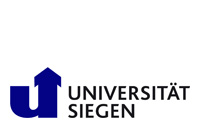
Suche
News
You are here
Title: 3D Trajectory Extraction from 2D Videos for Human Activity Analysis
Author: Zeyd Boukhers
Supervisor: Prof. Dr. Marcin Grzegorzek
Reviewers: Prof. Dr. Marcin Grzegorzek and Prof. Dr. Kuniaki Uehara (Kobe University, Japan)
Date of defence: 26.09.2017
Abstract:
The present dissertation addresses the problem of extracting three-dimensional (3D) trajectories of objects from two-dimensional (2D) videos. The reason of this is the theory that these trajectories symbolise high-level interpretations of human activities. A 3D trajectory of an object means its sequential positions in the real world over time. To this end, a generic framework for detecting objects and extracting their trajectories is proposed, ending with applications of trajectory analysis. In this context, each step represents independent approaches dedicated to solving challenging tasks in computer vision and multimedia.
In order to analyse different human activities in image sequences, it is crucial to extract appropriate features that can express these activities. Considering 3D trajectories of objects as high-level features, the difficulty lies in their extraction from 2D videos due to the serious lack of 3D information. Starting from video frames, this dissertation introduces methods to detect objects in crowded images. In addition to the local and global characteristics, deep learning-based features are used in this process to distinguish objects from the background. The main contribution of this work is centred in the subsequent step of the framework, which is dedicated to sequentially putting objects into perspective. In simpler terms, it means obtaining the 3D coordinate of the objects detected on the image plane and then tracking them in the real world to extract their 3D trajectories. Due to the varying complexities associated with different types of videos, two different methods are proposed in this dissertation. Here, each method addresses the problem of extracting 3D trajectories of objects from videos that are taken under specific conditions, namely, surveillance and moving cameras. Lastly, two applications of trajectory-based human activity analysis in the crowd are proposed. The first application employs trajectories to detect groups of people, whereas the second application analyses the trajectories to classify the human behaviour into ordinary and suspicious.
In summary, the dissertation at hand presents several approaches, the combination of which yields the extraction of 3D trajectories of objects from 2D videos. To show the robustness of each approach and its sub-methods, detailed evaluations on public and challenging datasets are performed.

